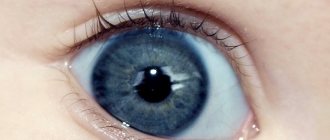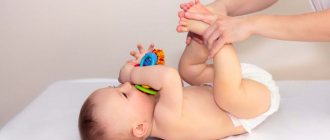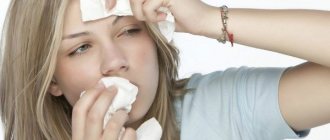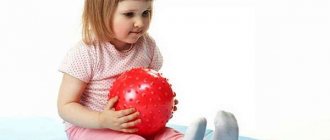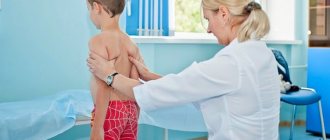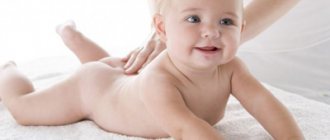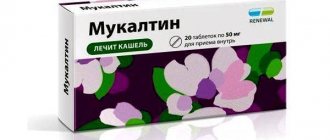Benefits of massage for coughs
Massage sessions for wet coughs are often prescribed as an auxiliary treatment method. During the procedure, mechanical heating of the bronchial tubes and liquefaction of mucus occurs. As a result, sputum is coughed up faster and removed through small and large bronchi into the trachea.
Massage promotes:
- improving the movement of biological fluids;
- increasing the mobility of the ribs;
- strengthening the muscles involved in breathing;
- stabilization of breathing;
- reducing body intoxication;
- increasing the effect of medications taken;
- normalization of sleep;
- increasing overall tone.
The advantage of massage over other treatment methods is the absence of side effects and the possibility of use regardless of the patient’s age. Additionally, working out has a positive effect on all organs and systems of the body, improves mood, and promotes relaxation.
The effectiveness of massage for bronchitis
Massage for diseases of the bronchopulmonary system has a beneficial effect on the body, it is to improve:
- microcirculation in tissues;
- drainage of lymphatic fluid, which helps relieve swelling;
- local metabolic processes, which relieves inflammation;
There is also a reflex effect on the muscles. The ciliated epithelium is stimulated, the respiratory tract is cleared of infection, and pain is relieved.
Thanks to the procedure, inflammation is reduced and bronchial patency is restored. At the same time, the removal of pathological exudate is accelerated.
If chest and back massage for bronchitis is performed correctly, relief occurs immediately. The cough intensifies, which helps improve breathing and get rid of phlegm.
The severity of symptoms such as shortness of breath, cough gradually decreases, and the frequency of attacks decreases. This helps prevent the development of stagnant processes that promote the proliferation of bacteria.
Also, improving ventilation of the respiratory tract prevents the proliferation of anaerobes, most of which are the cause of the development of infection.
Contraindications
Any of the massage techniques refers to physiotherapeutic procedures and has a number of contraindications. Cough massage is prohibited when:
- elevated temperature;
- acute form of chronic diseases;
- oncology;
- hypertension;
- heart failure;
- tuberculosis;
- skin diseases;
- liver and kidney diseases.
Before the session, you must make sure that you are not allergic to the components of massage oils. During pregnancy, you should additionally consult your doctor before the session.
Acupressure, percussion and other effective methods of massage for a child when coughing
Respiratory tract diseases in childhood are a serious problem due to an insufficiently strengthened body. Often, drug treatment does not bring the desired effect. In this case, massage for a child’s cough is recommended by most doctors.
Types of massage
There are a large number of techniques that affect the child and have a complex effect on the entire body without the help of medications. Each procedure has a number of its own characteristics and contraindications. By properly performing a massage when a child coughs, you can get rid of not only the symptoms, but also cure the disease.
Popular types of massage for cough treatment are:
- point;
- percussion;
- drainage;
- can;
- honey;
- stone therapy.
Before using any procedure, you need to learn how to do a massage and all the nuances of its implementation.
Acupressure
This massage technique for coughing in children is carried out in accordance with the location of acupuncture points on the body.
The procedure is performed based on the classical meridian system in acupuncture. To treat cough, effects are applied to the biological active points of the lung meridian. This meridian is a pair, having 11 points. The meridian starts from the chest, then rises to the collarbone, then moves to the shoulder joint and descends to the tip of the thumb.
Acupressure for coughs is carried out using acupuncture, cauterization and kneading of active points. Acupuncture and moxibustion are not recommended to be performed independently, as this requires knowledge in reflexology. When performing the procedure, the specialist must clearly determine the depth of needle insertion and the degree of cauterization to obtain the maximum therapeutic effect.
Having studied the anatomical location of the points, you can knead them one by one using little force. Each point must be massaged for 2-3 minutes, after which the procedure can be repeated 2-3 times.
The use of acupressure is recommended for:
- bronchial asthma;
- cough;
- pneumonia;
- suffocation;
- swelling of the mucous membrane of the throat and larynx;
- laryngitis and pharyngitis;
- sore throat.
By correctly performing acupressure on a child when coughing, you can get rid of many respiratory diseases without the use of medications.
Percussion massage
A technique that has a healing effect on the respiratory tract is often used in conjunction with the use of expectorant syrups or herbal decoctions to improve the therapeutic effect.
Important! The procedure is absolutely painless and if pain occurs, it is recommended to stop the massage immediately.
The procedure is carried out as follows:
- The child must be placed on his stomach, placing a pillow or bolster under the pelvis so that the lower part of the body is raised above the head.
- Then light stroking movements are performed in the lung area.
- After stroking, vibration techniques begin. Often this is light tapping with the fingers or the edges of the palms.
- After finishing the vibration, the child is asked to stand up and clear his throat.
- The entire procedure takes 15 minutes for older children and 10 minutes for infants.
Percussion massage is the most optimal way to cure a child’s cough. The procedure is quite easy to learn, which allows you to do it at home without the help of a specialist. However, it must be remembered that infants have a weak skeletal system, and excessive physical impact can lead to injury.
Drainage massage
The massage technique is used to strengthen the muscles of the respiratory tract, remove mucus, and improve metabolism. The use of drainage massage is recommended in combination with medications.
The procedure is prescribed for diseases of the respiratory tract that cause a strong, lingering cough. During the acute period, massage is prohibited.
Drainage massage for children with cough is carried out as follows:
- The child is positioned so that the chest is raised above the head. To do this, place a cushion or pillow under the stomach.
- Standard stroking and rubbing techniques are used. All actions are performed from the bottom up. Rubbing is carried out until the skin becomes slightly red.
- The procedure ends with light patting of the palms on the back.
After the massage, the child should be asked to cough. Infants need to clear all the mucus from the mouth or press on the root of the tongue to trigger the gag reflex.
For children, the entire procedure is carried out within 8 minutes and is designed for 8 sessions.
On our website there is a video devoted to the technique of performing drainage massage for children, here is the link (Komarovsky’s opinion on this matter is also there.)
Unlike percussion massage, this technique places emphasis on rubbing and stroking. Vibration movements take 2-3 minutes of total time.
Cupping massage
It is recommended to carry out cupping massage when a child coughs using medical cups, which can be purchased at any pharmacy.
The procedure helps with:
- bronchitis;
- tracheitis;
- pleurisy;
- pneumonia.
During acute periods of illness, massage is not performed.
Helps remove mucus from the respiratory tract and helps get rid of a lingering cough.
Technique:
- The back must be lubricated with oil or Vaseline to improve the sliding of the cans.
- Two cans are installed at the level of the second thoracic vertebra. To install, you first need to lightly lubricate the inside of the jars with alcohol. Then bring it to the skin, light the alcohol and with a sharp movement place it on your back. This is done to create a vacuum and seal tightly. The alcohol should not drip from the can, otherwise it may leave a burn on the body.
- After installation, a movement is performed along the spine downwards and upwards 6-8 times on each side.
- Then a spiral movement is performed along the spine down and up 6-8 times.
- The last thing to do is massage the intercostal lines. You need to move the banks up and down 8 lines, twice on each line.
You can complete the cupping massage with light stroking. At the end of the procedure, the child must be covered for 20-30 minutes to consolidate the effect.
Honey massage
Honey has long been famous for its medicinal properties in folk medicine. It is used when added to drinks, compresses, ointments, as well as during massage procedures.
The technique is quite simple and does not require in-depth study of the topic.
The procedure is carried out as follows:
- Chest massage begins with stroking and rubbing techniques.
- After thorough warming, honey is applied to the chest. It is recommended to use linden honey, it has hypoallergenic properties and does not cause irritation.
- With light massaging movements, honey is spread over the skin.
- As soon as the honey begins to thicken, sticking and sticking movements are performed with the palms.
- At the end of the massage, it is recommended to apply a honey compress for 10-15 minutes to consolidate the effect.
- After the compress, the honey should be wiped off with a damp towel or take a shower.
You can use baby honey massage to remove mucus from the bronchi, as well as to remove waste and toxins from the body.
Stonetherapy
A procedure that is gaining increasing popularity. Stone therapy is a massage with stones that are heated to a temperature of 40-45° and placed on the active areas of the back. Stone massage is used for dry coughs and other respiratory diseases. The stones promote deep warming and relieve inflammatory effects.
Stone therapy uses smooth stones from the sea or river shore. To obtain the maximum effect, stones are selected taking into account the anatomical structure of the body so that they fit tightly to the skin.
Therapy is carried out as follows:
- To begin with, the techniques of stroking, rubbing, kneading with the use of aromatic oil are used to prepare the skin.
- Pre-heated stones are placed on the chest in the lung area. Cover the top with a towel and leave to lie for 10-15 minutes.
- After time has passed, the stones are moved slightly to uniformly warm the entire chest area and are covered again for 10-15 minutes.
- After thoroughly warming up, you need to remove the stones and cover your chest with a towel or blanket to consolidate the effect.
It is necessary to massage a child with caution, as overheated stones can cause burns.
How to massage babies
Percussion massage is recommended for infants. This technique is quite simple to perform and does not take much time.
To carry out the procedure, the baby must be positioned on a horizontal plane or on an adult’s lap so that the pelvis is higher than the head. After this, a massage is performed using light vibration movements using the fingertips or the edge of the palm.
The tapping takes place in the lung area. It is important not to perform massage actions at the kidney level - this can lead to pathological disorders.
children's (percussion, drainage) massage (from three months).
After performing the vibrations, the baby must be put on his feet and the mucus removed from the oral cavity. If the mucus is located in the throat, the child must be helped to get rid of it by inducing a gag reflex.
To do this, you need to lightly press the tip of the tongue with a teaspoon - this will help the baby cough up the mucus. Such actions must be repeated 3-4 times per session. The entire procedure is performed within 10 minutes.
Indications and contraindications
It is recommended to use cough massage for respiratory diseases and accompanying symptoms.
In order to carry out the procedure, the most important thing is to know the contraindications to its use.
These are:
- increased body temperature (above 37°);
- individual intolerance to the components used;
- skin disorders or diseases;
- oncological diseases;
- liver and kidney diseases;
- heart failure.
In addition to the main contraindications, there are individual ones for each type of massage. Before using any of the techniques provided, you must consult with your doctor to obtain permission to perform this manipulation.
Conclusion
about how to relieve a child’s cough with massage.
Massage techniques combined with drug treatment help to quickly and effectively get rid of cough at any age. However, the use of manual interventions can lead to a number of side effects. In order to avoid disturbances in the functioning of the body, it is necessary to consult a doctor and find out whether massage can be done for a specific disease.
Source: https://MyKashel.ru/lechenie/massazh-pri-kashle-u-rebenka.html
For bronchial pathology
Typically, massage treatments are prescribed for pneumonia and bronchitis. A standard session begins with gentle stroking of the back. The technique can be either flat or grasping, rake-comb or tong-shaped. Simple movements alternate with burdened ones. The rubbing technique is carried out in spirals and in a circle, along straight lines and using shading and sawing. Rubbing is traditionally followed by kneading, which can be transverse, longitudinal or rolling. Vibrations for bronchial pathology are performed by:
- intermittent;
- continuous;
- patting;
- chopping.
Massage of the collar area includes:
- all the basic stroking techniques, going from the neck to the shoulders;
- rubbing in any direction;
- vibrations other than shaking.
Massaging the scapular area includes:
- stroking from the outer edge to the inner, to the shoulder joints;
- rubbing along the perimeter of the shoulder blades;
- kneading, including longitudinal and transverse;
- continuous vibrations throughout the entire treatment area.
The chest is worked in the following order:
- stroking is carried out from bottom to top;
- rubbing is carried out in all directions, but special attention is paid to the lower edge of the ribs, sternum and collarbone area;
- kneading;
- vibrations.
When performing vibration techniques, it is forbidden to touch the heart area and painful areas.
Vibrating
Before conducting a vibration massage session, it is advisable to drink an expectorant and begin the procedure after 25-35 minutes. The patient lies on his stomach, and the session begins by tapping the entire surface of the back with the edge of the palm for 10 minutes. The spine is not touched during the treatment.
Using your fingertips, you can tap the chest along the intercostal space. The technique is performed from the lower parts of the sternum to the upper ones, bypassing the heart area.
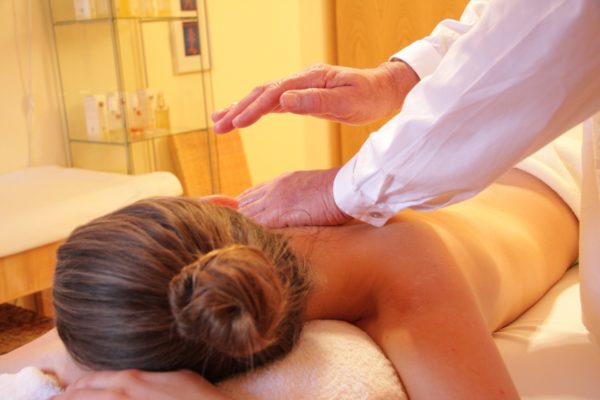
Drainage or percussion
The essence of postural drainage is to give the body a special position. Under the influence of gravity, sputum flows from the small bronchi to the main bronchi and trachea. The bifurcation zone of the trachea is filled with sensitive receptors, and the entry of sputum causes coughing attacks.
Drainage massage is simple and can be done at home. Before the session, the patient should take an expectorant and drink a lot of warm liquid. This could be tea with milk or lemon, water with honey, or warm fruit juice. The patient lies on his stomach with his head and chest facing down. Elbows rest on the floor. In this position, the person should slowly turn over from side to side for 10 minutes and cough.
To stimulate the process of sputum separation, a vibration massage is performed. Vibrations are performed with palms cupped. Tapping begins from the chest, and its frequency should be at least 40 beats per minute. Then take a break and repeat tapping 2 more times.
Acupressure for cough treatment
Knowing the main biologically active points, it is easy to calculate those that help in the treatment of colds and other diseases associated with the respiratory system. Acupressure for coughs, which has a healing effect, is suitable for these purposes. This massage is carried out at the following points:
- Lu. 1 – located below the collarbone, at a distance of one and a half transverse fingers. It is surrounded by the pectoralis major and deltoid muscles.
- Lu. 5 – located on the bend of the elbow joint, where the outer end of the elbow fold is.
- Lu. 9 – the location is considered to be the middle fold in the wrist joint, where the radial artery pulsates.
Three points exhibit high sensitivity when pressed. When treating acute bronchitis with cough, daily massage of these points is performed. The procedure is carried out for 1-2 minutes 1 to 2 times a day. To relieve a coughing attack, massage the Lu points. 5. After the procedure, a pepper patch is applied to these places for 2 - 3 days. If necessary, it can be replaced with a new one.
When treating chronic bronchitis, all three points are massaged once a day for two weeks. The procedure is performed clockwise, each point is massaged for 15-30 seconds. A repeated course of treatment is carried out after 1-2 months. In case of exacerbations, the number of procedures increases to two per day.
Dryness and irritation of the throat provokes the formation of a strong cough. It can be dry or wet, but, regardless of the type of inflammation, it must be cured as quickly as possible. Otherwise, there is a risk of developing pneumonia, tuberculosis, acute or chronic bronchitis.
Traditional therapy consists of taking medications and undergoing a course of physical therapy. Complex treatment will eliminate the symptoms of inflammation in a few days, as well as restore the functions of the mucous membrane. However, more and more people prefer to treat cough using unconventional methods. Therefore, acupressure massage for coughs in adults is gaining increasing popularity. Is this method safe and in what cases can it be used? We will discuss it in this article.
